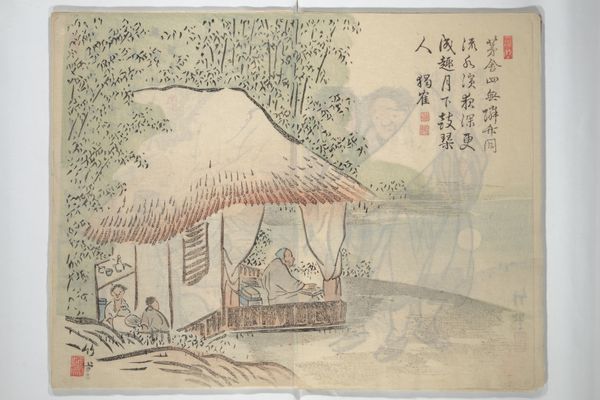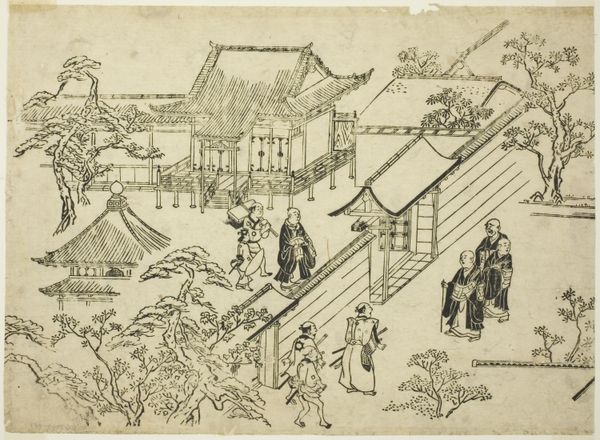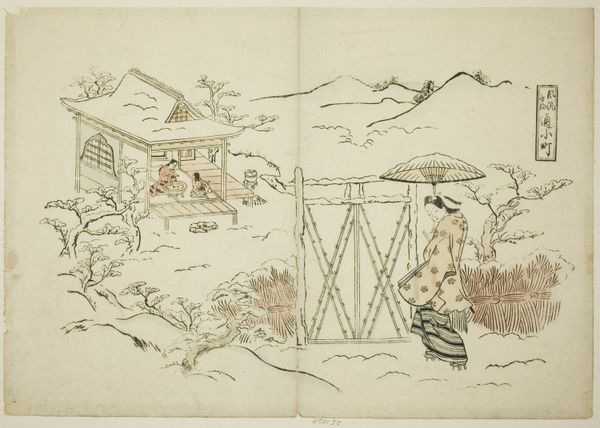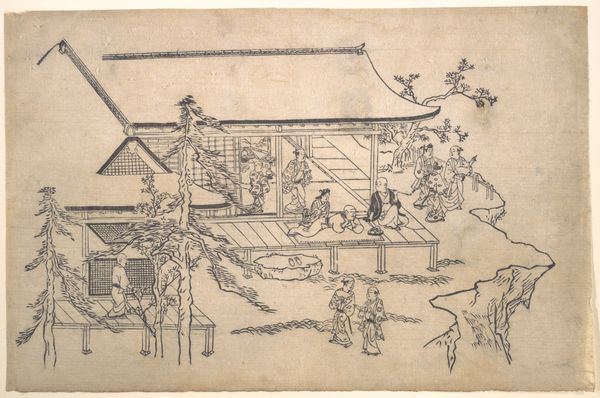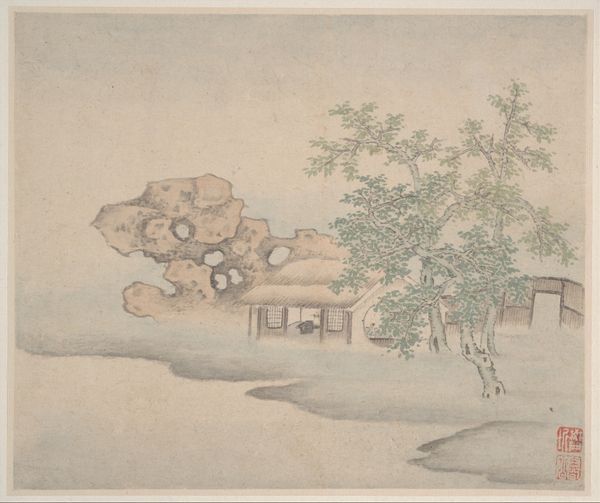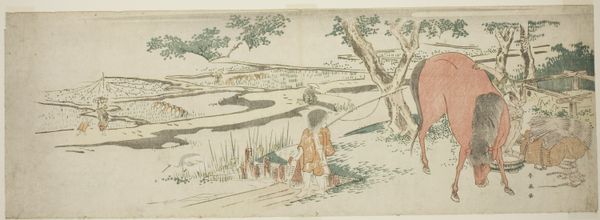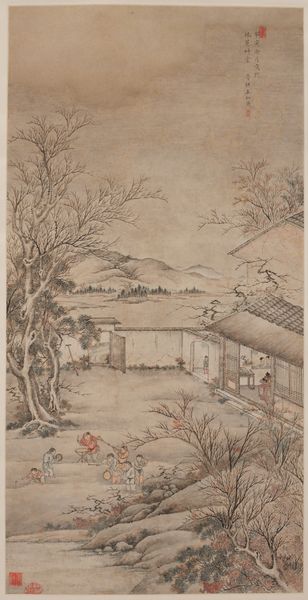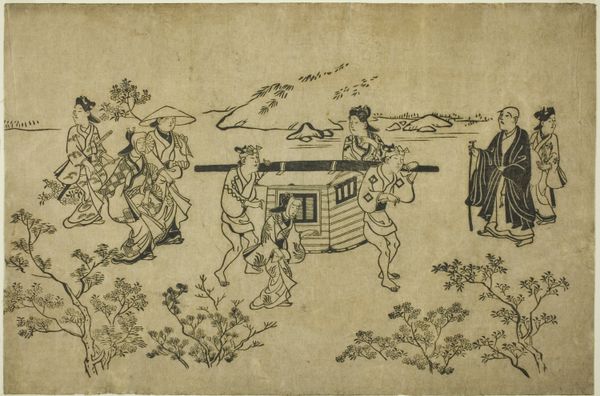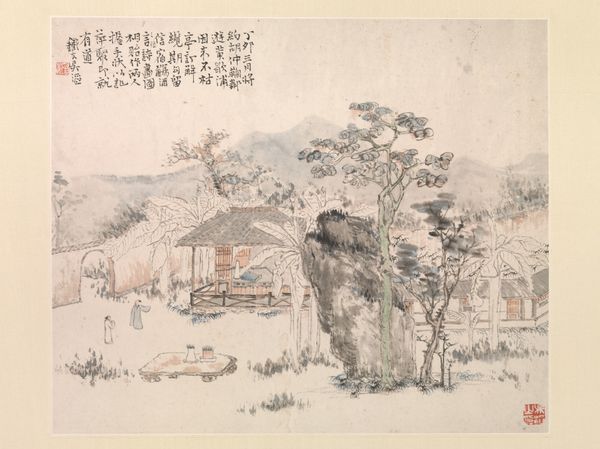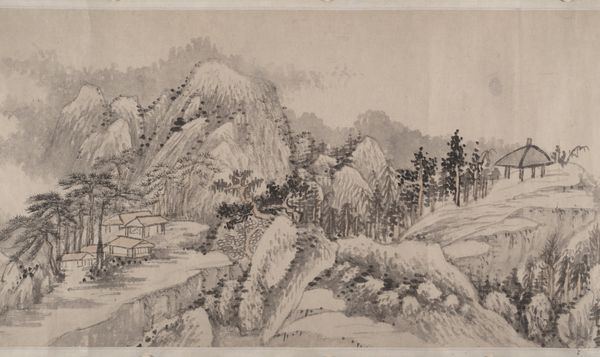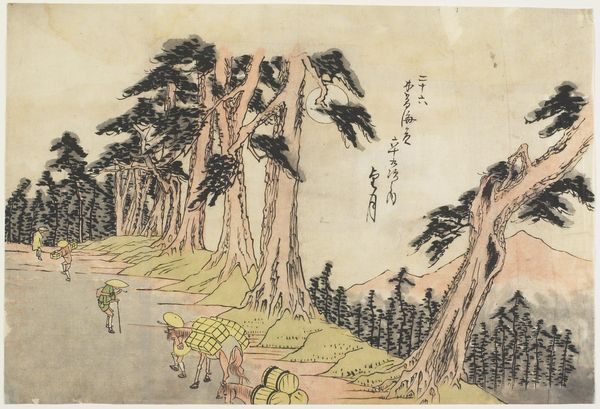
Parting at the Eastern Capital Ming dynasty (1369–1644), 15th century
0:00
0:00
drawing, painting, paper, ink
#
drawing
#
painting
#
asian-art
#
landscape
#
paper
#
ink
Copyright: Public Domain
Curator: At first glance, it's understated yet calming. The muted palette evokes a sense of gentle melancholy. Editor: This is Yao Shou's "Parting at the Eastern Capital," dating back to the 15th century during the Ming dynasty. Crafted with ink on paper, this artwork invites reflection on travel and separation, common themes during that period. It's now part of the collection at The Art Institute of Chicago. Curator: The almost sparse quality emphasizes the labor-intensive nature of creating such refined details using limited materials. Consider the paper itself— its sourcing, production, and inherent qualities— interacting with the ink. It is amazing! Editor: Absolutely, and let’s not forget how the piece might have functioned socially. Scroll paintings like this often served as gifts for travelers. Reflect on what it meant for this object to pass from patron to artist, and then traveler as this piece circulated in its specific cultural setting. Curator: Exactly, we see people embarking on journeys via boats in this artwork, so the paper might have become a treasured possession for sojourners to carry or send from afar! This tells a bigger story about art patronage, right? Editor: Definitely. And the Eastern Capital was a major cultural hub during the Ming Dynasty, adding an extra layer to our interpretation, reflecting back on socio-political structures of art-making itself. The work asks us, what is a city? What does it mean to part, to go? It has political implications. Curator: By the way, let's talk more about the medium: the delicate balance of the ink. And it isn’t a simple mass-produced tool—we see marks, textures, and specific choices of varying saturation… I wonder, do some elements, say the houses, the trees, or the clothing signify quality? How might people compare and trade materials? What labor conditions contributed to Yao Shou's composition? Editor: These are all insightful points; bringing it back to reception, such details surely impacted not just the artist's reputation, but the social and political interpretations projected onto Yao Shou and his landscapes at this moment of cultural explosion in the Ming dynasty! Curator: Absolutely. Appreciating "Parting at the Eastern Capital" encourages a more thorough inspection into not only the art history but into the economic means and materials required to create this moving artwork. Editor: And placing it within broader histories provides critical insights. By examining both materials and its cultural background, we recognize the layers of meaning woven into this beautiful piece of art.
Comments
No comments
Be the first to comment and join the conversation on the ultimate creative platform.
